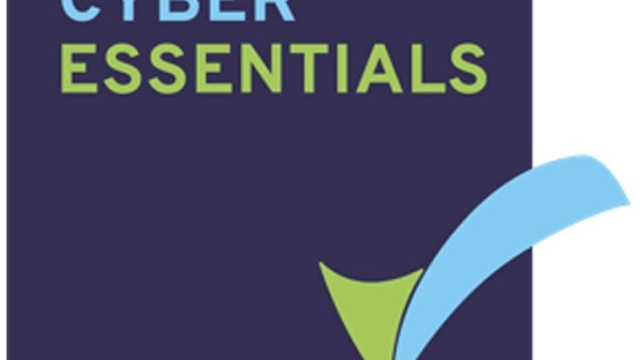
In the vast digital landscape we navigate daily, our online safety should never be taken for granted. With cyber threats becoming increasingly sophisticated, it is crucial for individuals and organizations alike to equip themselves with the necessary tools and knowledge to protect against potential dangers. This is where Cyber Essentials comes into play, serving as a cornerstone for cybersecurity practices and establishing a strong foundation for online security.
Cyber Essentials acts as a robust framework designed to provide organizations with the essential controls they need to defend against common cyber threats. It encompasses a set of guidelines and best practices that cover various aspects of information security, including boundary firewalls, secure configurations, user access control, malware protection, and patch management. By adhering to these principles, organizations can significantly reduce their vulnerability to attacks, safeguard their sensitive data, and maintain the trust of their customers and stakeholders.
In today’s interconnected world, Cyber Essentials is more important than ever. It empowers individuals and organizations to identify potential risks, adopt preventive measures, and enhance their overall cybersecurity posture. Whether you’re a small business seeking to protect your operations or an individual looking to safeguard your personal information, embracing Cyber Essentials is a vital step towards unlocking a safer online experience. So, let’s delve into the essentials of cybersecurity and embark on a journey of digital resilience and protection.
Understanding Cyber Essentials
Cyber Essentials is a critical aspect of ensuring online safety. It encompasses a set of basic security measures that organizations and individuals can implement to safeguard their digital environment. By adhering to Cyber Essentials, one can significantly minimize the risk of cyber threats and protect sensitive data from unauthorized access.
Implementing Cyber Essentials involves various essential practices to fortify online defenses. Firstly, organizations need to ensure that all their devices and software are regularly updated with the latest security patches. These updates often contain vital fixes for vulnerabilities that cybercriminals can exploit. By keeping systems up to date, one can mitigate potential risks and maintain a secure online environment.
Another crucial aspect of Cyber Essentials is the establishment of robust access controls. This involves implementing measures such as strong and unique passwords, two-factor authentication, and limited user access rights. By strictly controlling access to sensitive information and systems, organizations can prevent unauthorized users from breaching their networks and compromising data.
Furthermore, Cyber Essentials emphasizes the importance of educating employees or individuals about potential online threats. This includes raising awareness about phishing attacks, suspicious email attachments, and harmful links. By fostering a culture of cybersecurity awareness, organizations and individuals can significantly reduce the likelihood of falling victim to cyber-attacks.
In summary, Cyber Essentials provides a foundation for effective online security. Through regular updates, stringent access controls, and ongoing education, organizations and individuals can navigate the digital landscape with greater resilience and protect their valuable assets from potential cyber threats.
Implementing Cyber Essentials
The implementation of Cyber Essentials is a critical step in safeguarding your online presence and protecting your digital assets. By following the essential guidelines and practices outlined in this framework, you can significantly enhance your organization’s cybersecurity posture.
Secure Configuration: A fundamental aspect of Cyber Essentials is the implementation of secure configuration measures across your IT systems and devices. This involves ensuring that all software and hardware components are properly configured and maintained, with default settings and unnecessary features disabled. By adopting secure configuration practices, you can minimize vulnerabilities and reduce the likelihood of successful cyber attacks.
Cyber Essentials ComplianceBoundary Defense: Establishing robust boundary defenses is another key aspect of Cyber Essentials. This entails implementing effective firewalls and network security measures to control incoming and outgoing traffic, as well as protecting your network from unauthorized access. By fortifying your organization’s boundaries, you can effectively shield your systems and sensitive information from external threats.
Access Control: Implementing strong access controls is crucial for maintaining the integrity and confidentiality of your data. Cyber Essentials emphasizes the need to ensure that user access privileges are appropriately assigned, regularly reviewed, and revoked when necessary. By implementing stringent access controls, you can minimize the risk of unauthorized individuals gaining entry to your systems and compromising valuable information.
By diligently implementing these Cyber Essentials measures, you can significantly enhance your organization’s resilience against cyber threats and minimize the potential for costly breaches. Remember, achieving cybersecurity requires a holistic approach, and regularly reviewing and updating your security measures is crucial to staying one step ahead of evolving threats. Protecting your digital ecosystem should be a top priority for every organization, and Cyber Essentials provides a comprehensive framework to help you navigate the ever-changing landscape of online safety.
Benefits of Cyber Essentials
Enhanced Protection: Implementing Cyber Essentials provides organizations with a strong foundation for protecting their digital assets. By following the essential security measures outlined in the Cyber Essentials framework, businesses can defend against a range of common cyber threats. This includes protection against malware, unauthorized access to systems, and potential data breaches. By strengthening their cybersecurity practices, organizations can minimize the risk of falling victim to cyberattacks and mitigate the potential damage they can cause.
Business Continuity: Cyber Essentials plays a vital role in ensuring the continuity of business operations. By adopting these essential security practices, organizations can significantly reduce the likelihood of suffering from disruptive cyber incidents. When businesses are resilient to cyber threats, they can better focus on their core activities and services without the fear of unexpected disruptions. This enhances overall operational efficiency and helps maintain customer trust.
Competitive Advantage: Achieving Cyber Essentials certification can provide businesses with a competitive edge in today’s digital landscape. With cybersecurity becoming an increasing concern for individuals and organizations alike, the ability to demonstrate a commitment to robust security measures can enhance an organization’s reputation. Cyber Essentials certification serves as a tangible proof of a business’s dedication to safeguarding sensitive information and protecting against cyber threats. This can be particularly advantageous when securing new clients, bidding for contracts, or differentiating oneself from competitors.
Remember, always ensure that you adhere to the Cyber Essentials guidelines to maximize the benefits and protect your organization against cyber risks.


